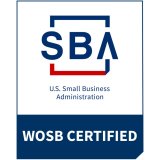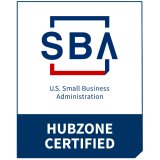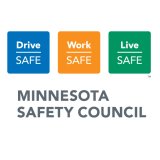NRR De-Rating Schemes Are Outdated
A new scientific report provides evidence for something companies have known for years. Hearing protection ratings, and de-ratings, are not helpful with the day-to-day success of a hearing conservation program. It's long been understood that the laboratory-based Noise Reduction Rating (NRR) does not accurately predict real-world performance of a hearing protector. But unfortunately, it's now clear that the numerous de-rating schemes developed over the years to compensate for NRR shortcomings aren't accurate either.
A new comprehensive analysis was recently published in the Journal of the Acoustical Society of America (JASA). Researchers from the National Institute for Occupational Safety and Health, the Department of Defense and others examined four real-world hearing protection attenuation studies. Results of Individual Fit Testing for workers were compared to product NRRs and various NRR de-rating schemes. The good news: individualized earplug fitting and training was shown to dramatically improve "real-world" protection for many workers. The not-so-good news was that NRR de-rating schemes failed to accurately predict real-world protection for the majority of workers tested. In many cases, real-world results far exceeded hearing protector performance predicted by NRR de-rating schemes. Because hearing protector fit testing systems are now readily available for use in the workplace, the authors concluded it is a better approach than relying on de-rating formulas.
NRR Ratings and De-Rating Schemes
 Hearing protection devices provide a wide range of protection against noise depending on the design of the protector and the fit in the individual user's ear. When OSHA promulgated the Hearing Conservation Amendment for general industry in the early 1980s, it incorporated the Environmental Protection Agency's Noise Reduction Rating (NRR) as a way to help employers evaluate and compare expected performance of available hearing protectors. The NRR is a laboratory-derived estimate of the attenuation (sound reduction) expected from a hearing protector when it is fitted and worn as designed. Shortly after the Hearing Conservation Amendment went into effect, however, it became evident that the actual amount of attenuation achieved in the workplace often fell short of the laboratory-predicted NRR.
Hearing protection devices provide a wide range of protection against noise depending on the design of the protector and the fit in the individual user's ear. When OSHA promulgated the Hearing Conservation Amendment for general industry in the early 1980s, it incorporated the Environmental Protection Agency's Noise Reduction Rating (NRR) as a way to help employers evaluate and compare expected performance of available hearing protectors. The NRR is a laboratory-derived estimate of the attenuation (sound reduction) expected from a hearing protector when it is fitted and worn as designed. Shortly after the Hearing Conservation Amendment went into effect, however, it became evident that the actual amount of attenuation achieved in the workplace often fell short of the laboratory-predicted NRR.
Since that time, regulatory and scientific groups have proposed a variety of schemes for adjusting hearing protector ratings in an attempt to better adapt NRR ratings to real-world performance. Some recommendations included cutting the NRR in half; others suggested a percent reduction according to the class of hearing protector. It's a commonly held misconception that OSHA, MSHA and other compliance authorities require that employers de-rate NRRs. Instead, companies should use the NRR calculation to help determine which types of hearing protectors will likely offer adequate reduction for workplace noise exposures. However, to find out what is happening in the real world for each worker, it is far more useful to conduct an Individual Fit Test to ensure that the chosen hearing protector is actually performing as intended. Read more about the NRR and other ratings here. NIOSH now recommends individual, quantitative fit testing of hearing protection in lieu of the derating scheme. See the 2025 NIOSH Science Policy Update here.
Real-World Measures
Individual Fit Test systems are designed to measure the noise reduction provided for an individual worker using their own hearing protector as it is routinely fit and worn. Although assessment equipment and procedures are not completely standardized, most fit test systems generate a Personal Attenuation Rating (PAR). Given the inability of laboratory ratings and de-rating schemes to accurately predict real world attenuation, PARs provide employers with beneficial information about fit and protection for each employee.
CavCom‘s experience mirrors the recent analysis published in JASA. Through Individual Fit Testing, we find our hearing protectors and earsets yield significantly higher actual protection via PARs than would be predicted by an NRR-based calculation, de-rated or not. In particular, custom-fitted hearing protectors are less susceptible to poor insertion, and generally provide more consistent and higher attenuation in the real world. Read more about Individual Fit Testing here.
 The Bottom Line about NRR De-Rating Schemes
The Bottom Line about NRR De-Rating Schemes
Stated simply, NRRs and de-rated NRRs do not accurately predict real-world performance of hearing protectors. For this reason, decisions regarding worker noise exposures and hearing protection are more accurate when based on real-world PAR values. Better information also helps companies tailor hearing protection to the work environment and avoid such pitfalls as overprotection. Overprotection is a situation where the worker receives more attenuation than necessary, leading to potential communication complications and safety concerns. Read more about overprotection here.
Lastly, it's important to remember that subjective considerations such as comfort and convenience are also key factors in hearing protector acceptance and wear time. It's often said, and is worth repeating, that the "best" hearing protector is the one that is worn correctly and consistently whenever the worker is exposed to hazardous noise. Read more about comfort here.
Contact Us
Not sure which hearing protectors are optimal for your workforce? Contact CavCom to discuss options and to learn more about how our innovative hearing protectors and communication earsets can improve safety and communication in your workplace.
Resources:
- NIOSH (2025). NIOSH science policy update: individual fit-testing recommendation for hearing protection devices. Cincinnati, OH: U.S. Centers for Disease Control and Prevention, National Institute for Occupational Safety and Health, DHHS (NIOSH), Publication No. 2025-104, DOI: https://doi.org/10.26616/NIOSHPUB2025104.
- Murphy, Gong, Karch, Federman and Schulz (2022). Personal attenuation ratings versus derated noise reduction ratings for hearing protection devices, The Journal of the Acoustical Society of America, 152 (2), 1074-1089. https://doi.org/10.1121/10.0013418.
- The Noise Reduction Rating (NRR), CavCom SoundBytes.
- Individual Fit Testing and Personal Attenuation Rating (PAR), CavCom SoundBytes.
- The Risk of Overprotection, CavCom SoundBytes.
- Improving In-Ear Comfort, CavCom SoundBytes.
| Categories: | Hearing Conservation Programs, Hearing Protection, Industry News |





